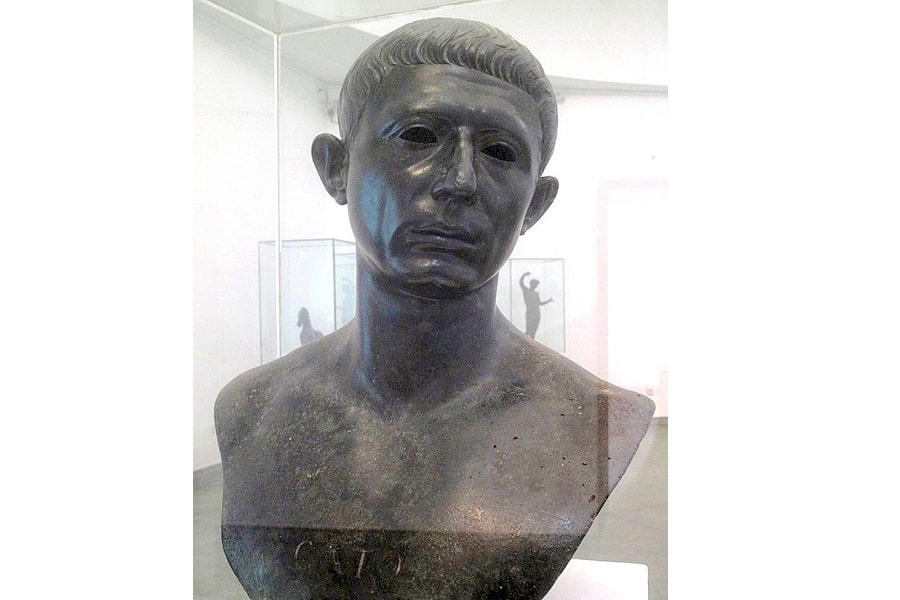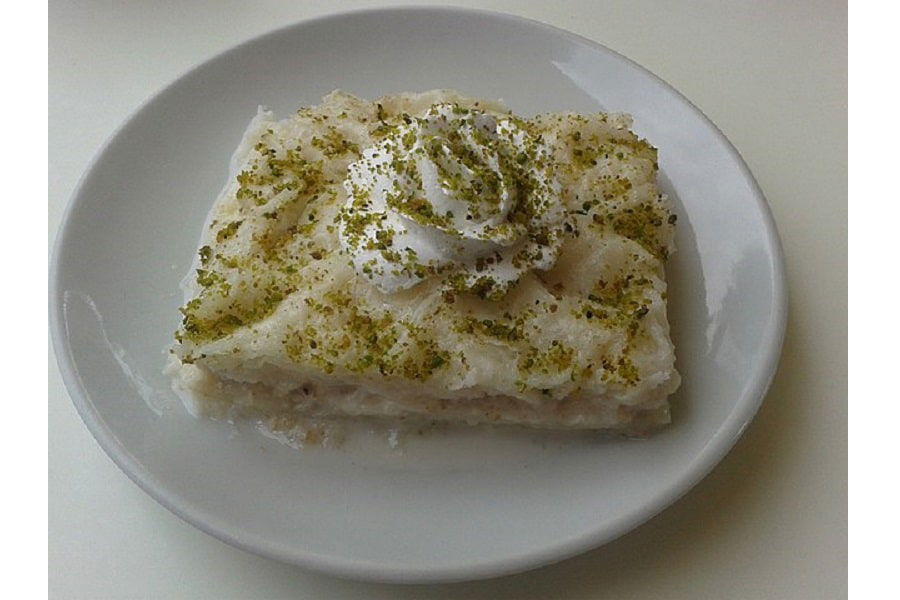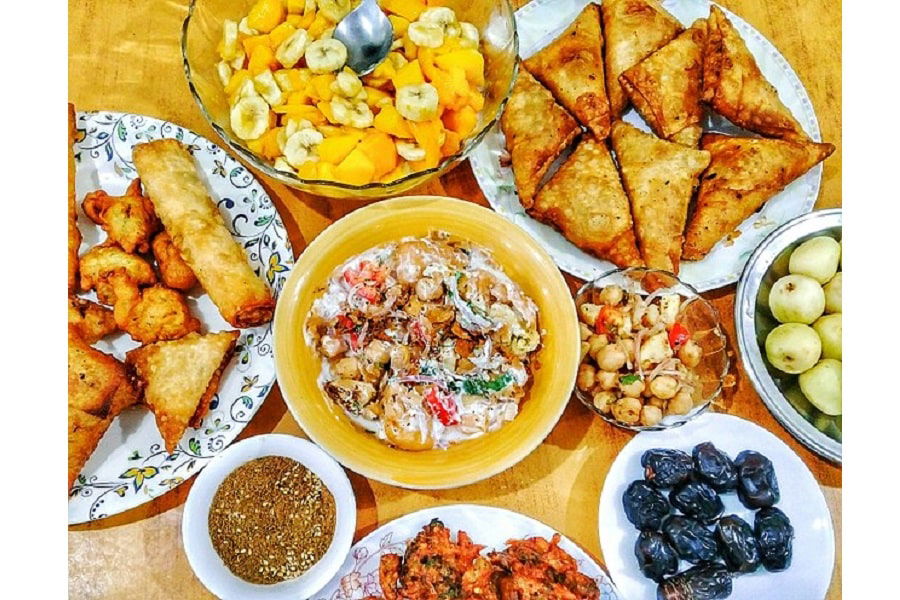Baklava, that delicious dessert made with layers of phyllo dough filled with chopped nuts, has a rather controversial history because both the Greeks and the Turks claim to have invented it. Originating in the Byzantine Empire, this dessert is a classic in the Mediterranean and Middle Eastern countries even today. But where exactly does this dessert come from? How old is it and who invented it? Is it the product of one nation alone?
Table of Contents
What is the Origin of Baklava?

Baklava or baklawa is believed to have originated during the Ottoman Empire. But the Greeks and the Turks are still not in agreement about which of them first invented it. It is a layered dessert that is made from very thin pieces of pastry called phyllo dough (also called filo dough), nuts like pistachio or walnut, honey, and a syrup scented with rosewater, cardamom, cinnamon, orange blossom, or saffron. Sometimes, even cashew is used in modern Turkish baklava. The dessert should be crisp, moist, sweet, and lightly fragrant.
Roman Placenta Cakes
There are three theories about how baklava actually originated and who its predecessor was. It either came from placenta cakes, Central Asian layered desserts, or the Persian lauzinaj. The first option is the placenta cake from ancient Rome. Since the Eastern Roman Empire or the Byzantine Empire was eventually taken over by the Ottoman Empire, it makes sense. Both Greek cuisine and Turkish cuisine have taken a lot of inspiration from ancient Byzantine cuisine. The Romans, in turn, had taken inspiration from the ancient Greeks. But placenta cakes had a Latin origin, not a Greek one.
The original recipe for placenta comes to us from Roman Senator Cato, who was very anti-Greek in general. In that recipe, he says that the thin rolled-out pastry dough called tracta should be placed at the bottom of the vessel. This was to then be covered by a layer of cheese and honey. The process would continue, layer by layer, until the honey and cheese mixture was used up. The placenta cake would then be baked and drizzled with honey.
The name ‘placenta’ comes from the Greek word ‘plakous’ which means ‘flat and broad.’ Thus, we can see some similarities with baklava, although the filling is different.

Greek or Turkish?
Whether baklava was influenced by placenta cake or not, it seems quite likely that the modern version of the dessert was first made by the Turks. It was probably developed in the royal kitchens of the Topkapi Palace in Constantinople (now known as Istanbul). It is documented that the Sultan of the Ottoman Empire would present trays of baklava to his infantry regiments every Ramadan. There was a ceremonial procession for it, which was called Baklava Alayi.
Other than that, evidence points to the fact that the precursor of baklava may have been the layered desserts that are so common to Central Asian Turkic cuisine. Güllaç is a similar kind of Turkish dessert that is considered by many to be the predecessor of the modern baklava. It consists of layers of phyllo brushed with milk and sugar. It is served with pomegranates and walnuts and is commonly eaten during Ramadan. Güllaç was, by all accounts, an old Mongolian dish from Central Asia.
However, many Greeks claim baklava as their own invention. They cite its similarity to some ancient Greek food. One dish in particular that they say could have been the inspiration for the baklava is a Greek dessert called kopton. However, this argument is not as convincing because kopton did not make use of phyllo pastry. It had layers of nuts and honey between a top and bottom layer of ground sesame paste.
Even the Armenians make a claim on baklava. They state that the word ‘baklava’ was coined by them and is a combination of ‘bakh’ meaning ‘lent’ and ‘halva’ meaning ‘sweet.’

The Invention and Popularization of Baklava
During the Ottoman Empire, a great mixture of people lived across Asia Minor. This included ethnic Greeks (mainly Greek Orthodox Christians), Armenians, Spanish Jews, Turkish Muslims, Romanians, Albanians, and various tribal communities. As far back as the 8th century BCE, Greek merchants were traveling across West Asia and the Mediterranean. Thus, they might have brought with them the earliest versions of baklava to the West. From Egypt to Iran, bakers were making layered bread or cake with nuts and honey, baked in wood-fired ovens.
However, it was the Arabs who introduced the distinctive flavors that make baklava what it is: the cardamom, the rose water, the pistachios, and the syrup. The more western nations used cinnamon, cloves, and walnuts. The phyllo (meaning ‘leaf’ in Greece) may have become synonymous with Greek cuisine now but it was the Serbians who actually mastered the practice of rolling it out to tissue-thin proportions.
Thus, it would be safe to say that all of these people helped contribute to the dessert now known as baklava. This cultural hotpot of people and ethnicities was all responsible for the cuisines that sprung up in these nations. There are distinct similarities between the food of the Mediterranean countries and many of the West Asian nations. This is no coincidence as there was a great deal of travel and blending of culinary traditions between these people. It is proof that food has no boundaries or borders.
What Does It Tell Us about International Relations of the Time?
For the Greeks, who recently celebrated 200 years of independence from the Ottoman Empire, baklava is a matter of national pride. They did not enjoy a position of privilege under the Ottoman Turks. Crediting the Ottomans with even something as simple as their cuisine is a sting to their pride after years of oppression.
Even in 2006, tensions between the two nations rocketed when Greek Cypriots chose baklava to represent them in the cultural initiative arranged by the Austrian presidency of the European Union, Cafe Europe. This was set against the backdrop of Turkey wanting to be a part of the EU. Thus, the decision of Cyprus must have been a source of great displeasure to the Turks.
But the very fact that there are so many disputes about who invented baklava also means that there was a great deal of cultural mixing at the time. Irrespective of religion, race, and ethnic or linguistic background, people were making and eating baklava. They still continue to make and eat baklava, with many of the nations having their own twist on the recipe. Thus, in some ways, the story of baklava is the story of many nations.

What Does ‘Baklava’ Mean?
The word ‘baklava’ originated in Ottoman Turkish, even though it is universally used in all languages now. It might be derived from the Mongolian root word ‘bayla’ which means ‘to tie’ or ‘pile up’ or ‘wrap up.’ The Mongolian ‘bayla’ itself is a Turkish loanword and some historians argue that it might come from the older Proto-Turkic words ‘baklağı’ and ‘baklağu.’
Certain linguists say that ‘baklava’ originates from the word ‘bakl-i’ meaning ‘feed.’ The suffixes were added later. The suffix ‘va’ seems to be of Persian origin but ‘baqla’ is not a Persian word and the origins of that has not been discovered.
Thus, the origins of ‘baklava’ as a word still remain a mystery. We only know that the dessert has been called that since the days of the Ottoman Empire.
Baklava and Religions
Baklava is an important part of ceremonies and holidays of Muslim, Jewish, and Orthodox Christian communities.
Baklava in Muslim Culture
During the month of Ramadan, those who observe the fast finish the day with the evening feast, called iftar. During this feast, friends, family, and neighbors gather to share a large meal. This meal generally concludes with a dessert, which in the Middle East usually means baklava.
Eating baklava during Ramadan was apparently a tradition that carried on from the Ottoman Empire, from the very origins of baklava itself. Sugar and sweet foods are of enormous spiritual significance in Islam, being connected to faith and true believers. Thus, baklava is consumed both during iftar as well as at Eid-ul-Fitr, at the end of Ramadan.
The end of the month of fasting is celebrated with sweet foods to restore the health of the people. Thus, families will make traditional desserts at home and buy chocolates and sweets to share with their loved ones.

Jewish and Greek Orthodox Christian Holidays
Islam is not the only religion where baklava plays an important role. Jewish and Greek Orthodox Christian holidays such as Purim, Passover, and Easter are also celebrated with this traditional dessert. During Rosh Hashanah, Jewish cooks make baklava with blanched almonds to get a lighter color. This is because Rosh Hashanah is an auspicious celebration and Jews are cautioned against eating dark-colored foods to guard against a dark year.
Baklava around the World
Wherever baklava originated, at present it can be found in different variations throughout the world. Many European and West Asian countries have their own version of the sweet. The Turks, Arabs, Greeks, Jews, and Armenians today all think of it as their national dessert. It would be important to note that all these communities were once a part of the Ottoman Empire.